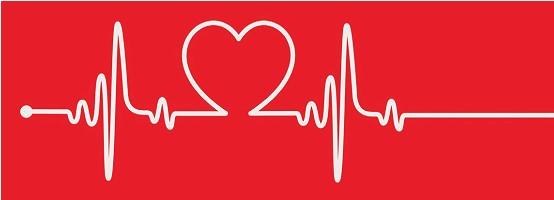Heart Attacks Have Beginnings
Heart attacks have early signs and symptoms that when recognized can be treated before any damage to the heart can occur. Early Heart Attack Care (EHAC) education can help save your life or the lives of others around you. Some symptoms may occur hours or even weeks before the actual heart attack occurs. These include feelings of fullness, chest aches or burning, shortness of breath, back or jaw pain, nausea, anxiety, fatigue, and pains that travel down one or both arms. High-risk factors include high blood pressure, obesity, use of tobacco, diabetes, and family history of heart disease.
In women, the use of birth control pills, any history of pre-eclampsia, gestational diabetes or having a low birth weight baby are risk factors to consider. Symptoms can manifest differently in women. Although men normally feel pain and numbness of the left arm or side of their chest, women experience these sensations on the right side of their body. Women are also more likely to experience exhaustion, dizziness and nausea, as well as upper back and jaw pain. Some symptoms are mistakenly assumed to be caused by flu, heartburn or an ulcer. Atypical presentations of heart attacks include sharp, stabbing pains while breathing, pain that spreads above the jaw bone or into the legs, and labored breathing. Visit www.deputyheartattack.org for more information about the symptoms, risks and prevention of heart disease, and share this information with those you know who may be at risk.
Best Time for Blood Pressure Pills
It may be time to reconsider when you take your blood pressure pills. A five year study published in the Harvard Health Letter shows that people who took their blood pressure pills at night had significantly more control over their blood pressure than those who took their medicine in the morning. They were also at far lower risk for heart attack and stroke. Researches in Spain tested 661 men and women who were taking one or more blood pressure medications. Half were instructed to take their pills in the morning while half took them before bedtime. At the conclusion of the study, subjects who took their pills in the morning were discovered to be three times as likely to have a heart attack or stroke.
For most people, blood pressure falls at nighttime with the lowest point being around 3 – 4 a.m. People with high blood pressure have little to no dip in their blood pressure at night. One possible reason may be that the effects of their medications have worn off throughout the day. Taking pills at night may cause the pressure lowering effects of medication to last longer. Caution: those who are elderly and at high risk of falling may not be recommended to take their medicine at night, as a powerful dip may cause an accident. Ask your doctor what time for administering medication is right for you before changing this habit on your own.
Sexually Active Boomers at Risk for HPV
New research, as reported in the Journal of Infectious Diseases, suggests that Baby Boomers – particularly those who became sexually active during the sexual revolution of the 60s and 70s – are at very high-risk of HPV infection. HPV (human papillomavirus) is the most common sexually transmitted infection. Almost 80 million people in the U.S. are currently infected, which is roughly a fourth of the population.
Nine out of ten HPV infections disappear on their own and cause no serious harm to health. In other cases, the infection lingers and can cause abnormalities in cells that can become cancerous. Some HPV viruses are known to lie dormant for decades before reactivating at a later age. Women are twice as likely as men to become infected, especially after menopause. It is highly recommended that sexually active men and women receive screening for their HPV status or risk.
 The Benefits of Lifting Lightly
The Benefits of Lifting Lightly
Weight lifting can be beneficial to all, not just professional athletes, and you do not necessarily have to lift a ton to reap the benefits. By using lighter weights you reduce the risk of injuring yourself during exercise, and according to a new study printed in the AARP, lifting light weights for
higher repetitions may be just as effective as lifting heavier weights for low repetitions. Regardless of the parameters, the method is the same: lift until you can lift no more.
Working your muscles to or near exhaustion twice a week can be a potent medicine to reduce the risk of falls, bone fractures, and aging-related strength and muscle losses. No matter your age or fitness level, with a consistent and progressive weight lifting regimen one can gain muscle mass, strength, and mobility, and improve joint, bone, and cardiovascular health.





The comments are closed.